2606Views 1Comment
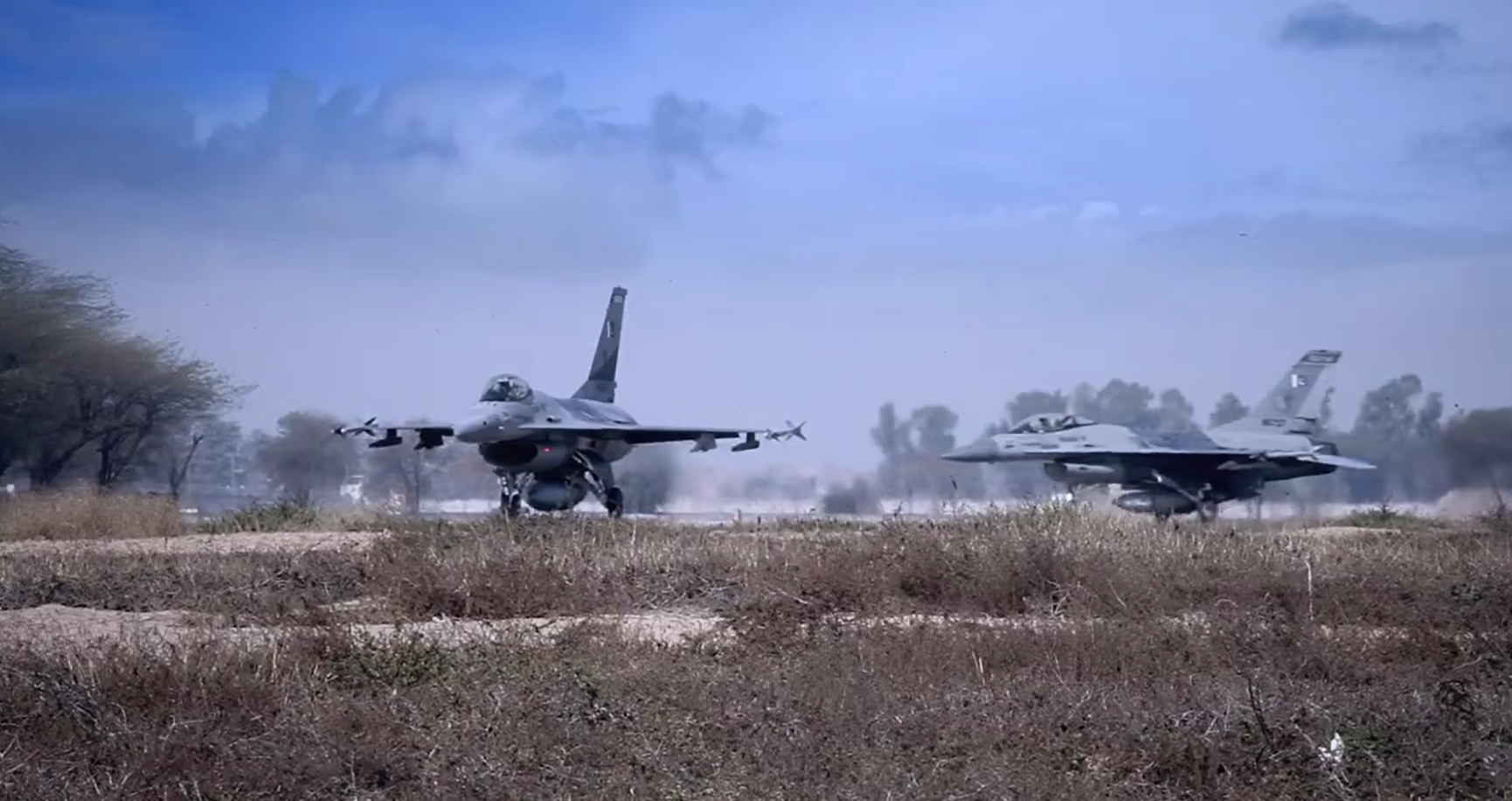
Pakistan’s Shift to COIN Part 4: Airborne ISR and Airstrikes
Continuing from Part 1, Part 2 and Part 3
The Pakistan Air Force (PAF) was called into action into FATA in the backdrop of the Pakistan Army’s initial lack of combat-ready dedicated attack helicopters[1], which would later be instrumental in providing the Pakistani infantry with close air support (CAS). From 2004 to 2008 (i.e. the tumultuous years of the conflict in FATA) the PAF’s support to the Army would take the form of occasional airstrikes. In 2009, under the command of Air Chief Marshal (ACM) Rao Qamar Suleman, the then newly appointed Chief of Air Staff, the PAF embarked on enhancing its capacity for counterinsurgency (COIN) operations.
When the shift began to materialize, the PAF was beset with the challenge of getting past the fact that the insurgents were well-embedded within FATA’s terrain. Prominent Pakistani defence analyst and retired Army officer Ikram Sehgal detailed the following as the foremost challenges facing the PAF (and wider military) in the early years of the FATA operations:
Pakistan’s military planners had many adverse factors to deal with: (1) the militants were virtually using the civilian population as human shields by fortifying positions in built-up areas; (2) the civilian population’s ratio to insurgents was very high; (3) the militants were taking good advantage of the inadequately mapped mountainous terrain to build tunnel strongpoints; and (4) detailed and precise locationing of insurgent positions was lacking.[2]
With the above in mind, the PAF was required to deliver two key operational capabilities in order to effectively support the Army and Frontier Corps in FATA: (1) Airborne ISR [intelligence, surveillance and reconnaissance] and (2) precision airstrikes. Driving the implementation of these core capabilities was the induction of new fighter platforms, munitions, numerous ISR assets (such as drones and surveillance equipment), and intensive small and large-scale training.[3]
Intelligence, Surveillance and Reconnaissance (ISR)
There are at least two key parts to remember when looking at the PAF’s ISR objectives. First, acquiring a thorough understanding of the terrain in FATA, especially the combat theatres.[4] Having been at the periphery of the Pakistani establishment’s concerns over the decades, FATA was not only not as well developed as other parts of the country (in terms of robust infrastructure), the region’s mountainous terrain was not fully understood. In cooperation with the Army and other relevant service arms, the PAF mapped the key areas of concern.[5] The second part was engaging in real-time ISR through the provision of imagery and targeting information.[6] This has been done through the use of unmanned aerial vehicles (UAV) and specially-equipped fighter and transport aircraft.
One of the first things the PAF did to develop its ISR capabilities was to install a forward-looking infrared (FLIR) pod onto the nose of one of its C-130B Hercules transport aircraft.[7] The pod, i.e. a FLIR Systems Star Safire III EO/IR [electro-optical/infrared] sensor ball[8], was acquired off-the-shelf and domestically installed (within a period of several months) on a modified C-130 in Pakistan.[9] The passenger area of the C-130 was outfitted with two large flat panel displays, through which personnel could observe the C-130’s live video-feed.[10] The FLIR Hercules (aka “FLIR Herks”) served in Operation Rah-e-Nijat (“Path to Salvation” -which took place in October 2009 in South Waziristan) as an ISR system as well as laser-designator (via the BRITE Star II also acquired off-the-shelf from FLIR Systems) for supporting the PAF’s laser-guided bomb (LGB)-equipped fighter aircraft, most notably the F-16.[11]
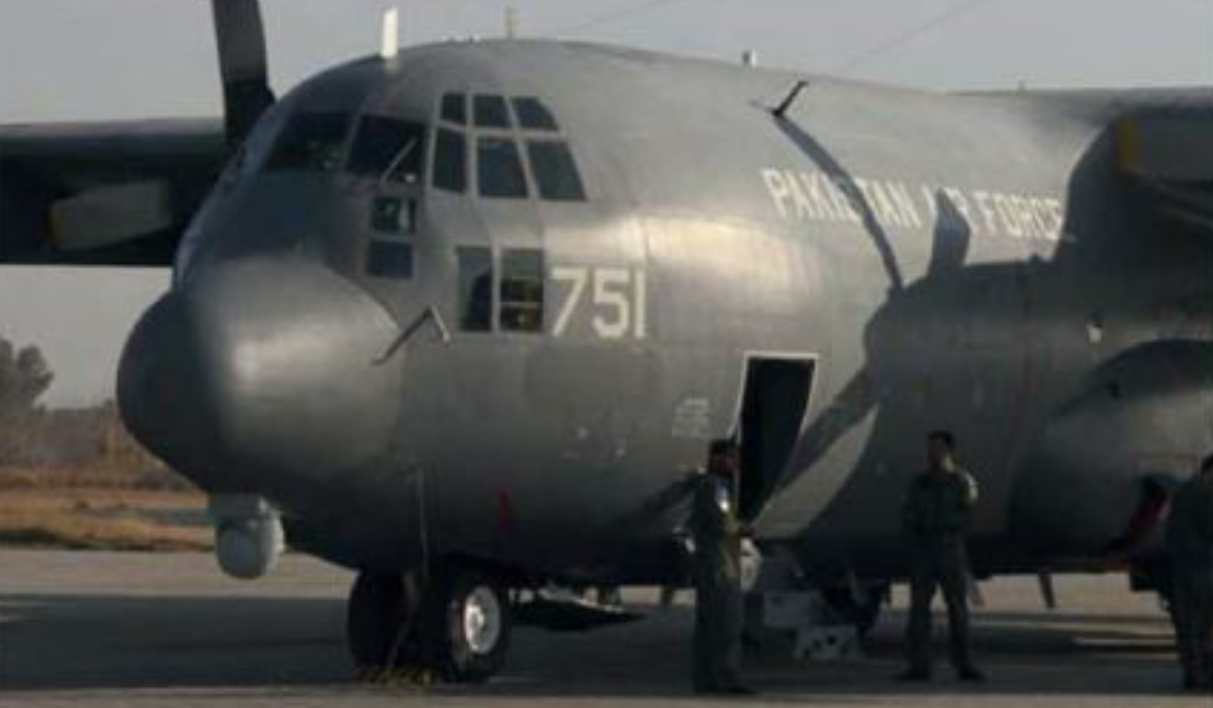
Speaking of the F-16, it too began to serve as an ISR asset, albeit in addition to its role as a multi-role fighter. In January 2009 the PAF began taking delivery of DB-110 reconnaissance pods from UTC Aerospace Systems (then two separate companies, Goodrich Corporation and Hamilton Sundstrand).[12] Prior to this the PAF’s main fighter-based photo-reconnaissance solution was the Mirage IIIRP, which was equipped with a Long-Range Aerial Photography (LORAP) pod; but with a 24-hour processing period, the LORAP-equipped Mirage was not suitable for the rapid dynamics of COIN warfare.[13]
The DB-110 on the other hand is a real-time (or at least near real-time) photo-reconnaissance solution. As an integrated ISR solution, the DB-110 is capable of capturing high-quality images at stand-off (i.e. away from the risk of enemy return fire) and close-in ranges. Once taken, the photos can be sent to ground stations (and likely onboard operators on aircraft) via data-link transmission, enabling the user to have a near real-time image of the ground. The pod was also used to map key areas[14], such as Swat in the lead-up to Operational Rah-e-Rast (“Righteous Path”), a key turning-point in the wider FATA conflict.
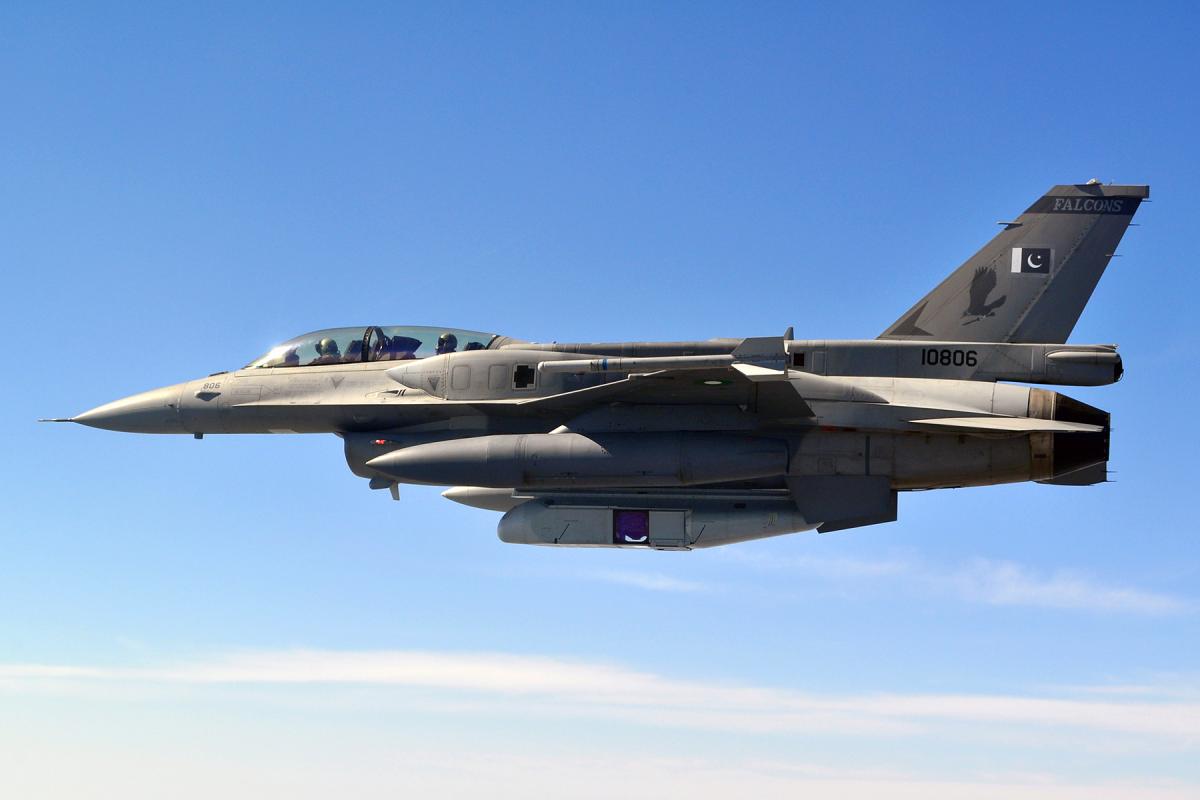
The PAF even seems to have managed to push (potentially via data-link) the DB-110’s photo-feed to the display monitors onboard the “FLIR Herks”, enabling the personnel onboard to acquire a detailed understanding of the situation on the ground.[15] From the onset the Army has used these capabilities to considerable effect: For example, Army personnel onboard the “FLIR Herks” would relay by radio key information to advancing troops on the ground[16] and potentially even attack helicopters providing CAS [close air support].[17] Thanks to the IR sensor, the capability at hand would be available at night as well. By 2011 the PAF “FLIR Herks” had flown 650 sorties.[18]
In August 2009 the Pakistan Aeronautical Complex (PAC) began co-production of the Falco UAV, which was acquired from the Italian firm Selex Galileo.[19] The Selex Falco was bought with the aim of enhancing the PAF’s tactical surveillance capabilities. The Falco UAV has an endurance of 8 to 14 hours and is capable of carrying up to 25 kg in equipment, which would take the form of EO sensors for imagery and video-feeds, IR sensors for nighttime surveillance, and synthetic aperture radars (SAR) for high-resolution images, even under adverse weather conditions.[20] The Falco is also capable of short take-off and landing (STOL), enabling it to be deployed from unprepared airfields or areas relatively close to the combat theatre, thereby making it a flexible tactical asset.[21] The Falco UAV was introduced to the FATA theatre around 2010-2011 and it has since been used as part of the PAF’s wider ground surveillance net.[22]
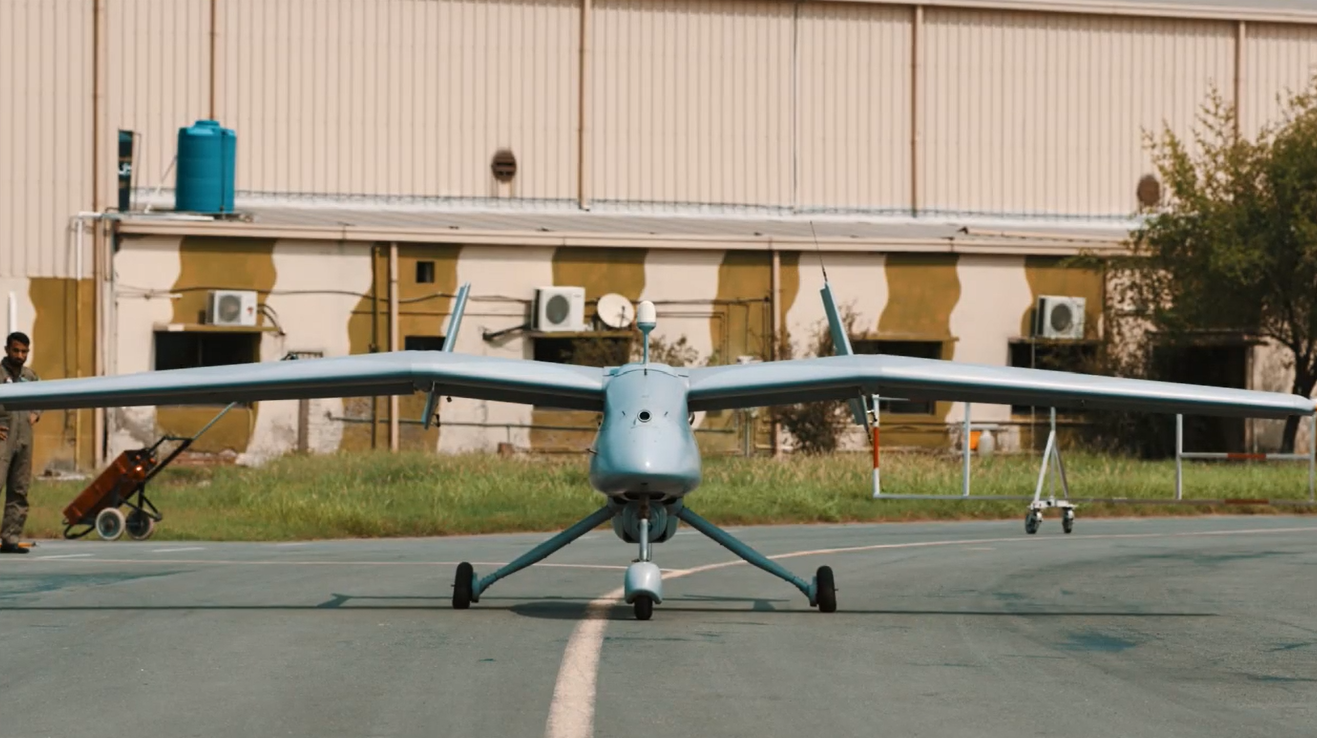
Precision Airstrikes
Between 2004 and 2008 the PAF would engage in airstrikes upon the request of the Army. However, the PAF’s participation during these years was relatively peripheral. Yes, the airstrikes would benefit the Army when used, but they were not standard-fare in terms of consistency, especially in terms of inducing pressure upon the insurgency. Things began to substantively change in 2009, particularly since Operation Rah-e-Rast, which commenced with the aim of clearing the Swat valley of the Tehreek-e-Taliban Pakistan (TTP)’s allies (e.g. Tehreek-Nafaz-e-Shariat-e-Mohammadi or TNSM).
In May 2009 the PAF commenced Operation Barq (Lightning) with the aim of destroying the insurgent hideouts, training camps, tunnels and ammunition dumps.[23] The objective of Barq was to sufficiently deprecate the capacity of the insurgents in the lead-up of a ground offensive by the Pakistan Army, which occurred via helicopters airlifting soldiers into hot-zones after the airstrikes.[24] As a result of the airstrikes, the Army and Frontier Corps were able to take control of Swat in relatively short-order with minimum casualties. As a general observation, Rah-e-Rast was a turning point in a number of ways: First, the TTP (and its allies) had begun to lose the momentum they had gained in the lead-up of the failed peace deal of 2009; from this point on, there would be no more ‘peace deals’ or territorial gains for the TTP. Second, it marked the permanency of the Army and Air Force’s respective COIN doctrines.
In August 2009 the PAF had organized a series of major air-to-ground strike-focused exercises under the name “Saffron Bandit.”[25] Until February 2010, units from every fighter squadron in the PAF attended the course (which took three weeks) with the aim of enhancing their air-to-ground competency in the context of COIN operations.[26] The Pakistan Army also deployed personnel on rotation to join Saffron Bandit in an effort to bolster their respective close air support (CAS) coordination capacities.[27]
Overall, Saffron Bandit had imbued Army and Air Force personnel with a clearer understanding of COIN-specific joint-cooperation and engagement.[28] The respective special operations forces (SOF) arms of the Army and Air Force – i.e. the Special Service Group (SSG) and Special Service Wing (SSW), respectively – also began to closely engage and cooperate with one another in order to bolster the synergy between airborne and land-based personnel and assets.[29] This would strengthen the military’s capacity for taking on time-sensitive targeting (TST) as well as pairing ISR gains with operational actions on the ground.[30]
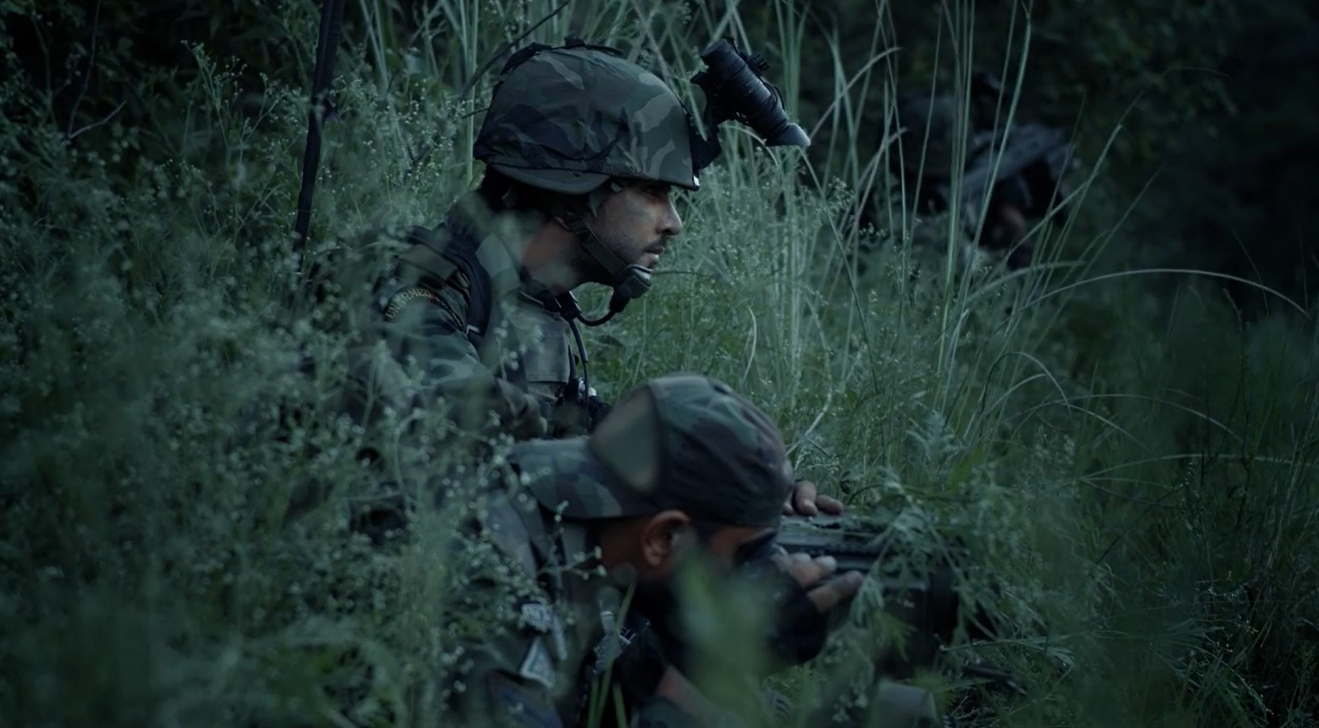
In terms of delivering the precision-guided bombs (PGB), such as the Paveway II LGBs, the mainstay of the PAF’s COIN-focused strike element are the F-16C/D Block-52+ and F-16A/B MLU [Mid Life Update].[31] The Block-52+ were new-built aircraft ordered in September 2006 and delivered from 2010 to 2012. Capable of using conformal fuel tanks (CFT) for range extension, the Block-52+ is capable of carrying a wide range of air-to-air and air-to-ground munitions. In terms of the COIN theatre, this would include the PAF’s large stock of GPS/INS-guided Joint Direct Attack Munition (JDAM) and Paveway II LGBs. These precision-strike munitions enable the PAF to efficiently utilize its bomb stocks such that each bomb strikes its target with a high-margin of success, thus negating repeat strikes and wastage. Supplementing the Block-52+ are three F-16A/B Block-15 squadrons, two of which have gone through the MLU, which equips them with the same radar and onboard elections as the Block-52+.
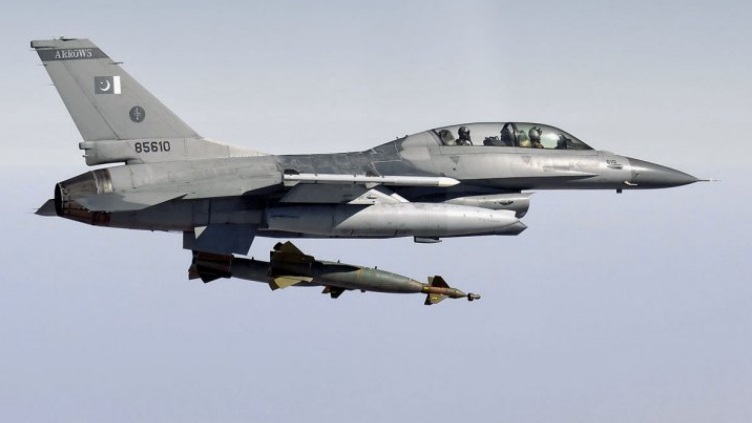
While the PAF has used the “FLIR Herks” as laser-designators to assist the F-16s in their LGB strikes, the PAF has since 2010 also taken delivery of Sniper Advanced Targeting Pods (ATP) from Lockheed Martin.[32] With 22 in use and another 15 on order, the Sniper ATP enables the PAF’s F-16s to autonomously engage in LGB strikes, i.e. without the need of other aircraft, vehicles or personnel designating the target separately. It can also be paired with the Joint Helmet Mounted Cueing System (JHMCS), which enables the pilot to cue the Sniper’s sensors using his or her head movement.[33] The Sniper ATP was a major jump for the PAF’s F-16s, which had previously been limited to daytime-only LGB strikes through the use of the Thomson-CSF ATLIS-II pods.[34]
By Zarb-e-Azb (2014-ongoing), the PAF’s air-to-ground strike operations had become an essential component of Pakistan’s COIN efforts in FATA. The PAF has also used the JF-17 Thunder over FATA, but it does not seem that the Thunder is as deeply involved in those operations as the F-16s. That said, with the WMD-7 targeting pod as well as LT-2 laser-guided and LS-3/LS-6 precision GPS/INS-guided bombs (similar to the Paveway II and JDAM, respectively), it is a capable enough platform.
Armed Drone Strikes
Amongst the most effective, controversial and longest sought weapons for use in FATA, armed drones are the newest additions to the armed forces’ inventory of weapons. For some brief background, the U.S utilized its Predator and Reaper armed UAVs to a high degree of effectiveness in dampening the momentum of the Taliban in Afghanistan and Pakistan. Pakistan had long sought this capability, but it was ultimately pushed to draw on China’s expertise as a means to meet its armed UAV needs.
The Burraq armed UAV was inducted in 2013. It is locally produced by NESCOM [National Engineering and Scientific Commission] alongside the Barq laser-guided air-to-ground missile (AGM). In September 2015 the Burraq had entered combat by firing a Barq AGM (which is similar in concept to the American AGM-114 Hellfire II), killing three “high profile” militants. It is apparent that the Burraq and Barq AGM are at least based on (if not licensed copies of) the Chinese CH-3 UAV and AR-1 AGM, respectively. It will be worth seeing if Pakistan adopts the larger CH-4 design in the coming years, which could carry as many as four AR-1 missiles.
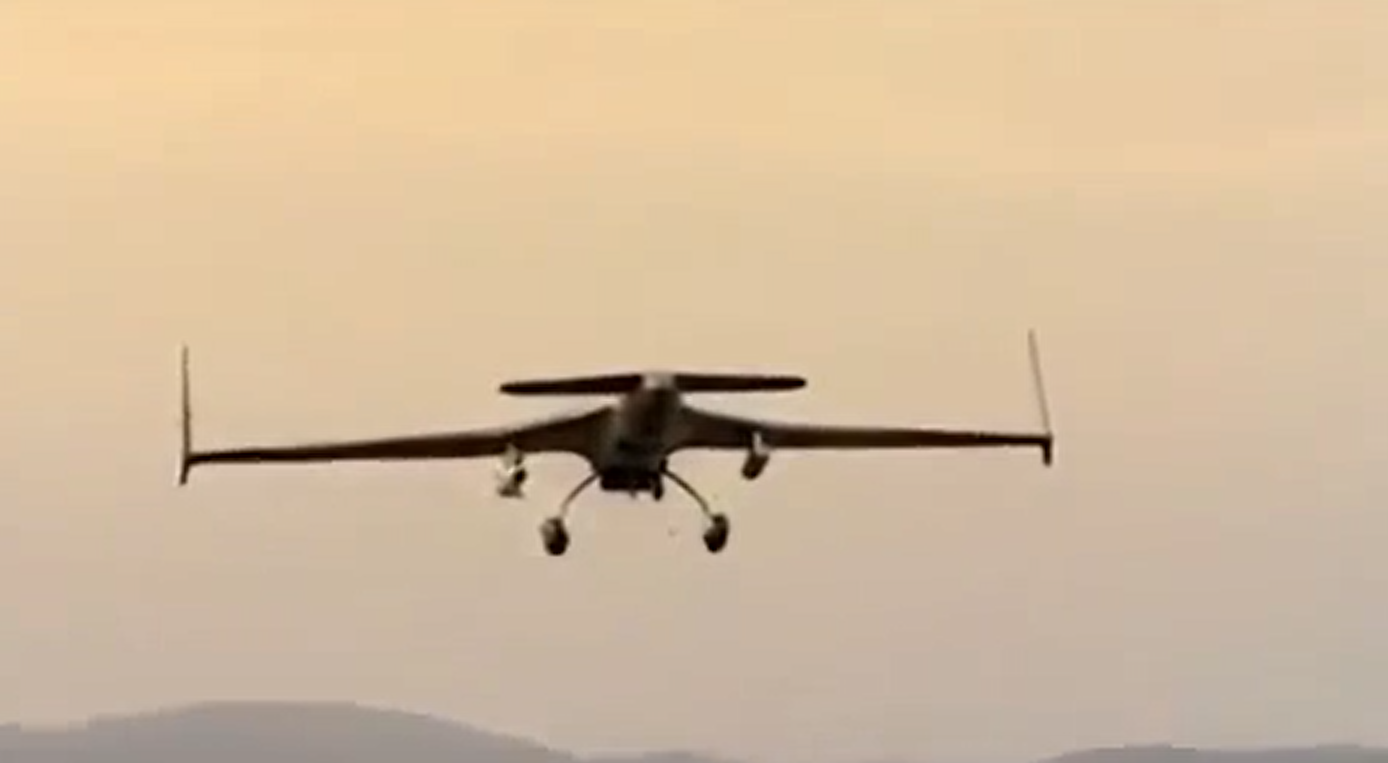
In any case, armed drones have added another layer to the PAF’s COIN-specific capabilities by giving it a platform that is directly suited for low-intensity and/or time-sensitive engagements. Whereas a Falco surveillance UAV could be sent to acquire information, the time-sensitive nature of a situation could make armed engagement difficult unless fighter aircraft or attack helicopters are already airborne and nearby. An armed drone such as the Burraq could loiter over an area for several hours, its 100 kg payload enables it to carry armaments as well as ISR equipment, enabling the aircraft to monitor, target and attack.
It is not clear if the Burraq is being used in conjunction with satellite-communication (SATCOM), which could be possible since Pakistan is slotted as a possible military user of the Chinese BeiDou space satellite network.[35] However, given that the Burraq is being used within Pakistani territory, it is unlikely much more is needed beyond standard ground-based communication.
Possible Additions?
There are a number of COIN-specific solutions that have become commercially available in recent years, but while their value is enticing, it is unclear if Pakistan has any plans (or need) to acquire such systems. In any case, it is still worth noting them, so as to understand the additional COIN-specific depth the PAF could attain should it choose to take that path.
Note, the following is purely speculation.
AC-235 Aerial Gunship: Jordan’s King Abdullah II Design and Development Bureau (KADDB) and U.S-defence firm Orbital ATK paired up to develop an aerial gunship variant of the CN-235 tactical transport aircraft. Delivered to the Jordanian forces in May 2014, the AC-235 is equipped with a 30mm cannon as well as hardpoints for laser-guided AGMs and 70mm rockets. The AC-235’s onboard elections suite includes a Thales I-Master Ku-band SAR radar alongside an L-3 Wescam MX-15 electro-optical targeting system (EOTS), which enables the aircraft to track and engage targets. In addition to offering close air support (CAS) and suppression fire, the AC-235 – with its sensor suite – can serve as an ISTAR [intelligence, surveillance, target acquisition and reconnaissance] platform, i.e. providing land-based and airborne friendlies with situational awareness of the ground situation in the midst of a battle.
The PAF already operates four CN-235s as transport aircraft, so from a maintenance standpoint, it has a start in as far as the AC-235 is concerned. One could also argue that the underlying idea is not too far off from the “FLIR Herks”, except that the AC-235 is a fully dedicated ISTAR and CAS platform. The AC-235 is a cost-sensitive and exportable design meant to be marketed to countries such as Pakistan. However, the system would still be a comparatively large purchase, and its appeal to the PAF may be limited considering that its value is entirely drawn from being a COIN-specific system. Are the gains from an armed ISTAR platform (as small as the AC-235 no less) worth the cost of spending $35-50 million on a single unit?
A-29 Super Tucano-like COIN attack aircraft: This could be considered a plausible acquisition by the PAF, but not in the short-term. The availability of such aircraft would enable the PAF to free up its fighter fleet from the COIN effort, the use of which is costly in direct and indirect terms. A platform such as the A-29 Super Tucano or Hürkuş-C is capable of carrying up to 1500 kg in munitions, including precision-guided bombs, but the operational costs would be a fraction of that of a jet fighter such as the F-16. What makes the procurement of such a system by the PAF plausible is that it could be drawn from a wider program, i.e. the replacement of the T-37 with a light turboprop such as the Hürkuş-C. However, the PAF has not announced any plans to replace the T-37, though it will have to happen someday, it may not be soon.
JSTARS-like aircraft: Using a powerful synthetic aperture radar (SAR), a JSTARS [Joint Surveillance Target Attack Radar System]-like system would essentially enable the PAF to engage in real-time surveillance of a combat area. In addition to acquiring a remote image of the area’s topography, the SAR would allow the PAF to understand what or whom is occupying specific zones, and it can then relay that information to ground-based friendlies. Saab has already revealed an exportable solution in the form of the Swing Role Surveillance System (SRSS), which could be added to existing Erieye Airborne Early Warning & Control (AEW&C) aircraft, such as the ones the PAF operates. The key point about a JSTARS-like system is that it need not be limited to COIN, a powerful SAR would enable the aircraft to engage in real-time surveillance of state-borne threats (such as armoured formations) as well.
Conclusion
Not long after assuming command of the Pakistan Air Force, Air Chief Marshal Sohail Aman told Jane’s, “ISR is the key to our joint operations with the army.”[36] The salient point in his statement is the PAF’s differentiating value does not come from its airstrikes (though they are very important), but its far-reaching improvements in being able to apply modern-day ISR practices. The information acquired from ISR has been the most important contribution, for it has enabled the PAF to raise the situational awareness of the Army as well as ensure the efficient and focused use of its own strike capabilities.
[1] Ikram Sehgal. “Airpower in COIN Operations.” The News. Jang Group. 8 April 2010
[2] Ibid.
[3] Ibid.
[4] Ibid.
[5] Ibid.
[6] Ibid.
[7] Ibid.
[8] Chris Pocok. “Advanced avionics helping Pakistan to break militants.” AIN Online. 13 November 2011: http:// www.ainonline.com/aviation-news/defense/2011-11-13/advanced-avionics-helping-pakistan-break-militants
[9] Alan Warnes. “Putting Plans to the Test.” Air International. December 2012
[10] Ibid.
[11] Ibid.
[12] Ibid.
[13] Alan Warnes. “Pakistan’s Amazing Mirages.” Combat Aircraft. December 2013. p57
[14] Alan Warnes. “Putting Plans to the Test.” Air International. December 2012
[15] Ibid.
[16] Ibid.
[17] Ikram Sehgal. “Airpower in COIN Operations.” The News. Jang Group. 8 April 2010
[18] Chris Pocok. “Advanced avionics helping Pakistan to break militants.” AIN Online. 13 November 2011: http:// www.ainonline.com/aviation-news/defense/2011-11-13/advanced-avionics-helping-pakistan-break-militants
[19] Greg Waldron. “Pakistan to begin co-production of Falco UAV.” Flightglobal. 26 August 2009: https://www.flight global.com/news/articles/pakistan-to-begin-co-production-of-falco-uav-331492/
[20] Falco Tactical Unmanned Aerial Vehicle (UAV), Pakistan. Airforce-Technology.com: http://www.airforce-technology.com/projects/falco-uav/
[21] Ibid.
[22] Alan Warnes. “Putting Plans to the Test.” Air International. December 2012
[23] Ibid.
[24] Ibid.
[25] Ibid.
[26] Ibid.
[27] Ibid.
[28] Ikram Sehgal. “Airpower in COIN Operations.” The News. Jang Group. 8 April 2010
[29] Ibid.
[30] Ibid.
[31] Alan Warnes. “New Pakistan air chief hails F-16s’ role in North Waziristan campaign.” IHS Jane’s 360. 26 April 2015.
[32] “Pakistan Expands Lockheed Martin Sniper Advanced Targeting Pod Fleet.” Lockheed Martin. 14 July 2015: http://www.lockheedmartin.ca/us/news/press-releases/2015/july/mfc-071415-pakistan-expands-lockheed-martin-sniper-advanced-targeting-pod-fleet.html
[33] “Joint Helmet Mounted Cueing System.” Boeing: http://www.boeing.com/history/products/joint-helmet-mounted-cueing-system.page
[34] Alan Warnes. “New Pakistan air chief hails F-16s’ role in North Waziristan campaign.” IHS Jane’s 360. 26 April 2015.
[35] Usman Ansari. “Pakistan Employs China’s Beidou Guidance System, but Access Not Guaranteed.” DefenseNews. 07 May 2013: http://archive.defensenews.com/article/20130507/DEFREG03/305070030/Pakistan-Employs-China-s-Beidou-Guidance-System-Access-Not-Guaranteed
[36] Alan Warnes. “New Pakistan air chief hails F-16s’ role in North Waziristan campaign.” IHS Jane’s 360. 26 April 2015.

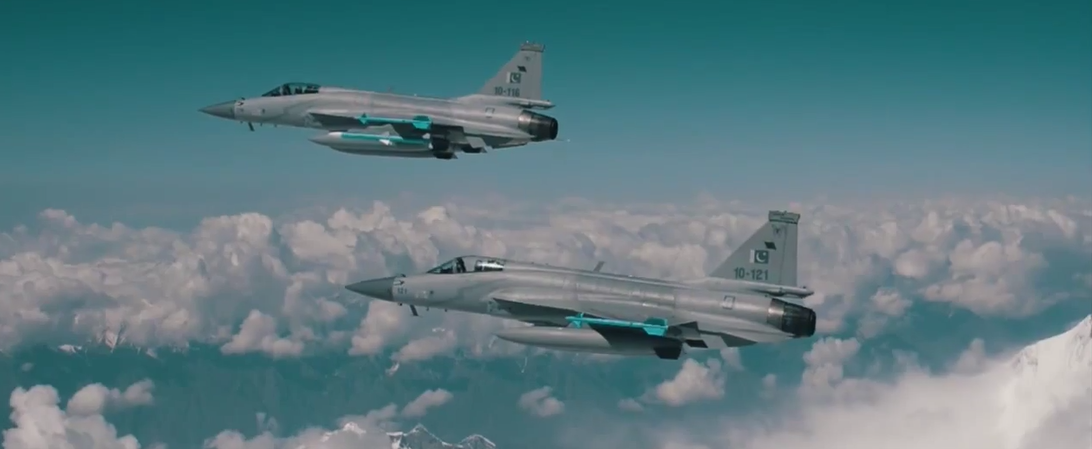
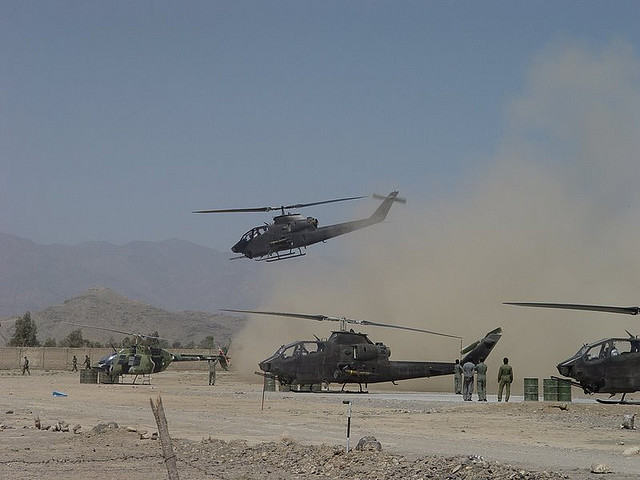
1 Comment
by Sami Shahid
Ah-1z good for all this